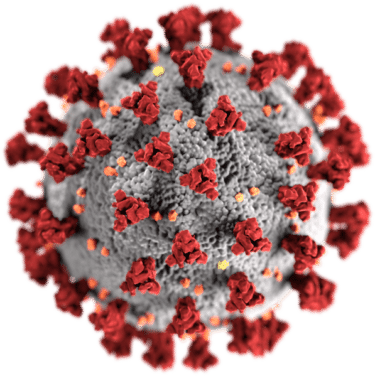As a skeptic, especially one with some level of public platform, I think a lot about responsibility. I think about our responsibility to patients with cancer who choose to go down the alternative medicine route, and how to defend their right to choose while championing good science and challenging pseudoscience. I think about our responsibility to support inclusivity, diversity and representation and creating safe and comfortable spaces for people of all backgrounds – all races, all genders, all levels of ability or disability; all humans. I think about our responsibility to use our voices for the promotion of critical thinking, while knowing when the best course of action is to stay quiet and let others speak.
But most of all, I think about our responsibility to truth, without causing harm. That last part is the important part we’re sometimes prone to forgetting. But I’m thinking about it more and more when it comes to the current climate – the global pandemic we are living through.
The COVID-19 pandemic is a perfect example of how public behaviour is influenced by a whole array of things, and how just sharing the truth and the science isn’t enough to convince people to do the right thing. It turns out the public is made up of humans, who have feelings and hopes and needs and beliefs.
So, I’ve been reluctant to write or talk all that much about COVID-19. I don’t want to judge people for making the best decisions they can, in a climate where they’re exposed to a lot of confusing information, misinformation, disinformation and poor communication. I don’t want to muddy the waters further by being yet another scientist throwing in their two pence. And yet, I watch on as COVID-deniers claim the virus doesn’t exist; as lockdown protesters fight against reasonable precautions put in place to save lives; as anti-maskers march in huge groups without masks; as we slide rapidly into what will surely be a crisis of anti-vax ideology influencing people’s choices to have the vaccines that will allow us to save lives – and I wonder what our responsibility is, as skeptics? How can we help?
I don’t have an answer. I’m sorry. I know skeptics across the world are feeling these things too and I wish I could give you the answer.

I do think, though, that knowledge and understanding is power. And knowledge and understanding does puncture some of the fear that contributes to the difficulty of making decisions.
We will all have a decision to make in the next few months: do we take the vaccine(s) that will have been approved more rapidly than any vaccine in human history? I’m sure many of us will feel the responsibility of supporting our families and friends in making the decision for themselves too.
I can, at least, tell you what I will (probably) do: take the vaccine when it is available. But I think knowledge and understanding is power. So, let’s talk about the vaccines.
Vaccination for COVID-19
At the time of writing, there are three companies who have provided efficacy data for three vaccine options. These vaccines are of two different types:
1. mRNA vaccine
The Pfizer vaccine and the Moderna vaccines are both mRNA vaccines using a lipid nanoparticle delivery system. They work by bringing mRNA – the molecule your cells need to make proteins – into your cells and asking the cells to make a protein that is part of the Sars-Cov-2 virus called the spike protein. This protein can then teach your immune system to make antibodies against that protein, so if you ever encounter the virus itself, you’re prepared to fight it off. The nice thing about mRNA vaccines is that your body never sees any virus – many vaccines use either dead (inactivated) or weakened (live-attenuated) viral particles to train the body’s immune system. mRNA vaccines are much quicker and easier to produce, so we can make doses of the vaccine much more quickly and more safely. Handily, they don’t need manufacturers to handle loads of Sars-Cov-2 virus to make their vaccine, they just need to handle the mRNA, which is inert.
The downside is that the mRNA vaccines are quite sensitive and they usually need to be stored at -80°C, which requires some pretty complex infrastructure to transport and store them at that temperature.
mRNA vaccines are a relatively new idea, and we’ve never had any approved for use in humans. This means that an approval for Sars-Cov-2 vaccination would be a real landmark.
2. Non-replicating viral vector
The Oxford/AstraZeneca vaccine is a non-replicating viral vector. It’s made from a virus similar to the cold virus, but one that usually infects chimpanzees, called an adenovirus. The virus has been modified so it can’t replicate, which means it won’t amplify through the body when it is introduced into a human. The genetic material inside the virus has been modified to contain the gene for that same spike protein of the Sars-Cov-2 virus. So, the adenovirus gets into your cells, makes the protein, and this teaches your immune system to recognise that protein in case you ever encounter the Sars-Cov-2 virus.
This solution uses a vaccine method that we’ve used before (although it’s still pretty new, too), so we have a bit more history to go on. It’s also much cheaper, at £3 per vaccine for the AstraZeneca vaccine, compared to £15 for the Pfizer one and £25 for the Moderna one, plus it doesn’t have the same storage issues as the mRNA vaccines. But the very early data so far suggests it might not be quite as effective without some extra optimisation.
The data
So far, most of what we have is interim data, which means it’s enough to have an idea of efficacy of these vaccines, but not enough to be sure. The data has also only been released by press release, rather than peer-reviewed publication, and therefore some of the information we need to make an independent analysis on the findings is missing. That’s ok when time is of the essence, but it means some of the data so far raise a few more questions than answers.
The Pfizer and BioNTech Vaccine

Pfizer have now reached the point at which they stated they would have enough data to make a comment on clinical efficacy (their endpoint); of the 41,135 participants who have had both doses of the vaccine (which are given three weeks apart), 170 people have developed COVID-19 at least 7 days after the second dose. Of those 170 people who have the infection, 162 were in the placebo arm of the trial – they did not have the vaccine against Sars-Cov-2. Only 8 participants with COVID-19 had been given the test vaccine. Which means the vaccine has 95% efficacy for reducing COVID-19. This only applies to symptomatic cases of Sars-Cov-2 infection, because Pfizer are only testing for the Sars-Cov-2 virus in symptomatic participants. We don’t know the impact of the vaccine on Sars-Cov-2 transmission, which is obviously an important gap in our knowledge.
Pfizer also say that they have a 94% efficacy rate in participants over the age of 65; this is really good news, since COVID-19 is particularly problematic in older people and vaccines are sometimes less effective in this age group too.
The study identified severe cases of COVID-19 in 10 participants, only one of those participants had had the vaccine, the rest were in the placebo arm of the trial.
The Moderna Vaccine

Moderna have released the interim findings for their vaccine. Their study has vaccinated 30,000 participants and their endpoint is 151 cases of COVID-19. So far, they have detected symptomatic COVID-19 in 95 participants; 90 of those participants were in the placebo arm and 5 of them had had the vaccine. This gives an efficacy rate of 95%. Moderna are also only testing people with symptoms, so we don’t have information on whether the vaccine reduces transmission. They have identified severe cases of COVID-19 in 11 cases and all of those cases were in the placebo arm.
The Oxford University and AstraZeneca Vaccine
The AstraZeneca study is slightly more complicated – it is split into two trials across two regions: 12,390 participants in the UK and 10,300 in Brazil. In the UK, participants either receive two full doses of the vaccine, or a half dose followed by a full dose of the vaccine. In Brazil participants receive two full doses of the vaccine.

They have released interim data indicating that 131 people have developed symptomatic COVID-19 at least 14 days after the second dose. When they pooled the data, the vaccine has 70% efficacy, which is lower than the Moderna and Pfizer vaccines but still very good for a vaccine. However, when analysing only the data for the dosing regimen that used the lower dose first, they found an efficacy rate of 90%.
AstraZeneca are taking nasal swabs as part of their trial in order to assess asymptomatic transmission – though it is unclear whether the efficacy data released so far includes this information. There were no severe cases of COVID-19 in the vaccinated group.
In conclusion
All in all, it’s promising data that we have multiple vaccination options that reduce symptomatic cases of COVID-19 and the cases of severe disease. Hopefully we’ll have more data to come from these studies as they reach their remaining endpoints and publish their findings.
There were no serious safety concerns in any of the trials, and the three companies all worked to include a wide range of patient demographics – including BAME and older participants, two demographics that we know are most affected by this virus.
But it’s still early days – we are lacking information on whether we see a reduction of transmission and we know very little about asymptomatic cases. We also know virtually nothing about the long-lasting effect of these vaccines – with time we will need to establish how long the protection conferred by these vaccine options lasts and whether we will need multiple dosing options.
Still, I think it’s far to say that it’s impressive to have so many good vaccine options within a year, and that should be celebrated as a win for science.
Special thanks to Health Nerd, Gideon M-K for some useful discussion about these vaccines.



